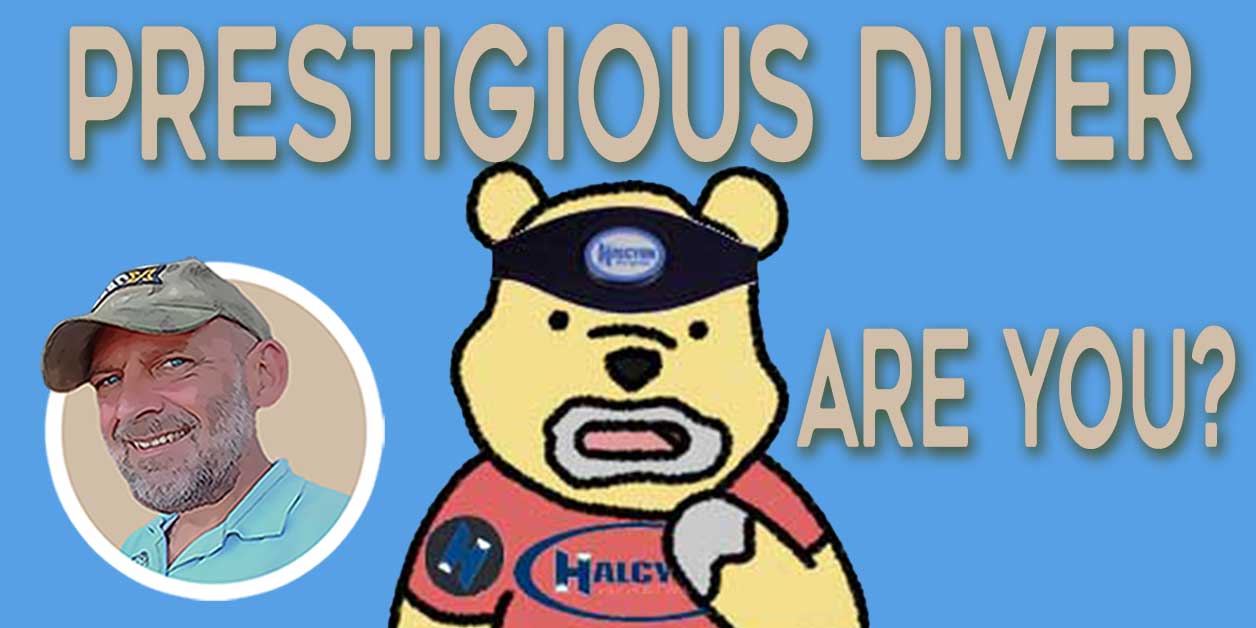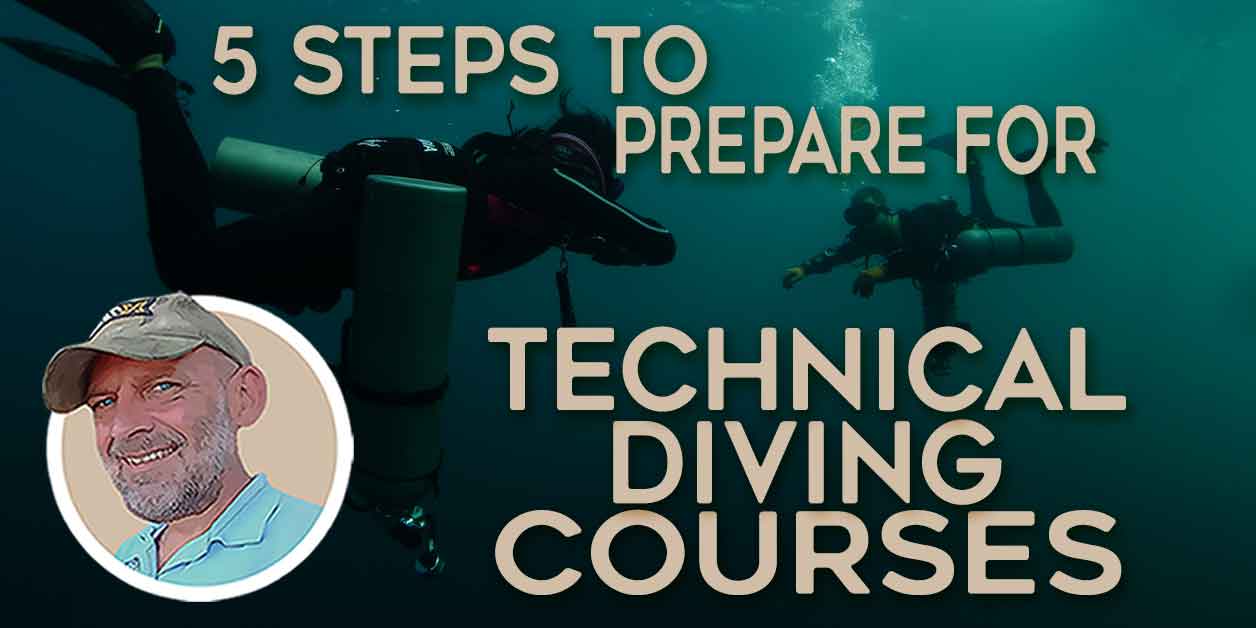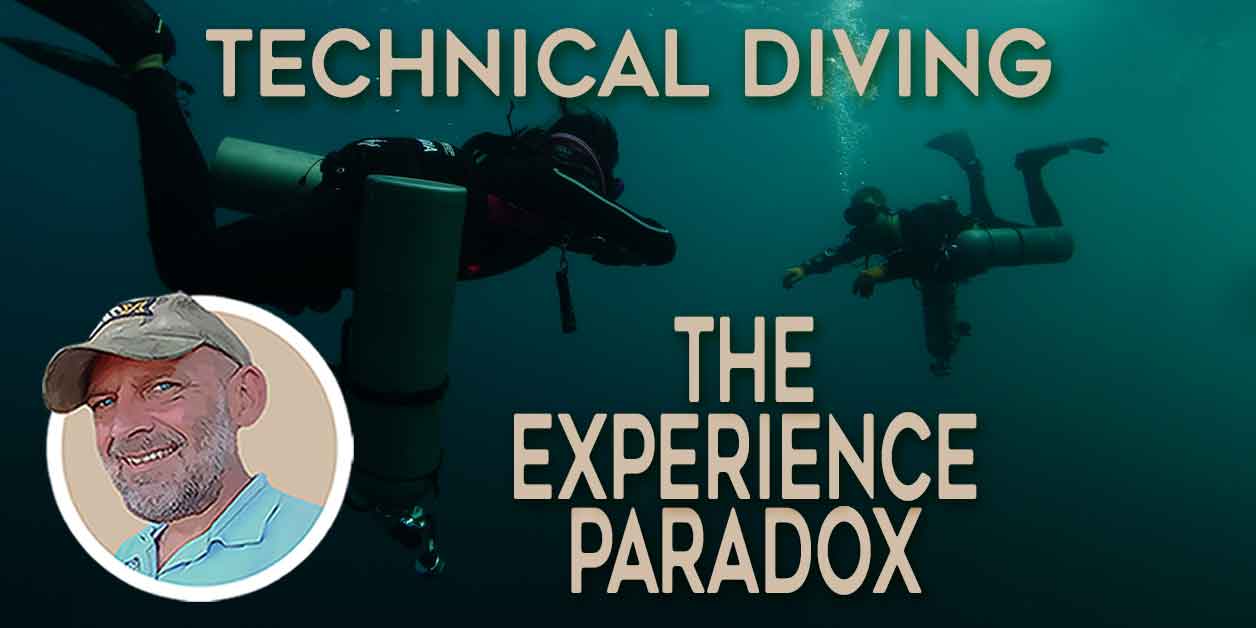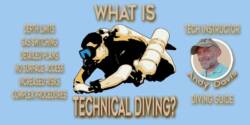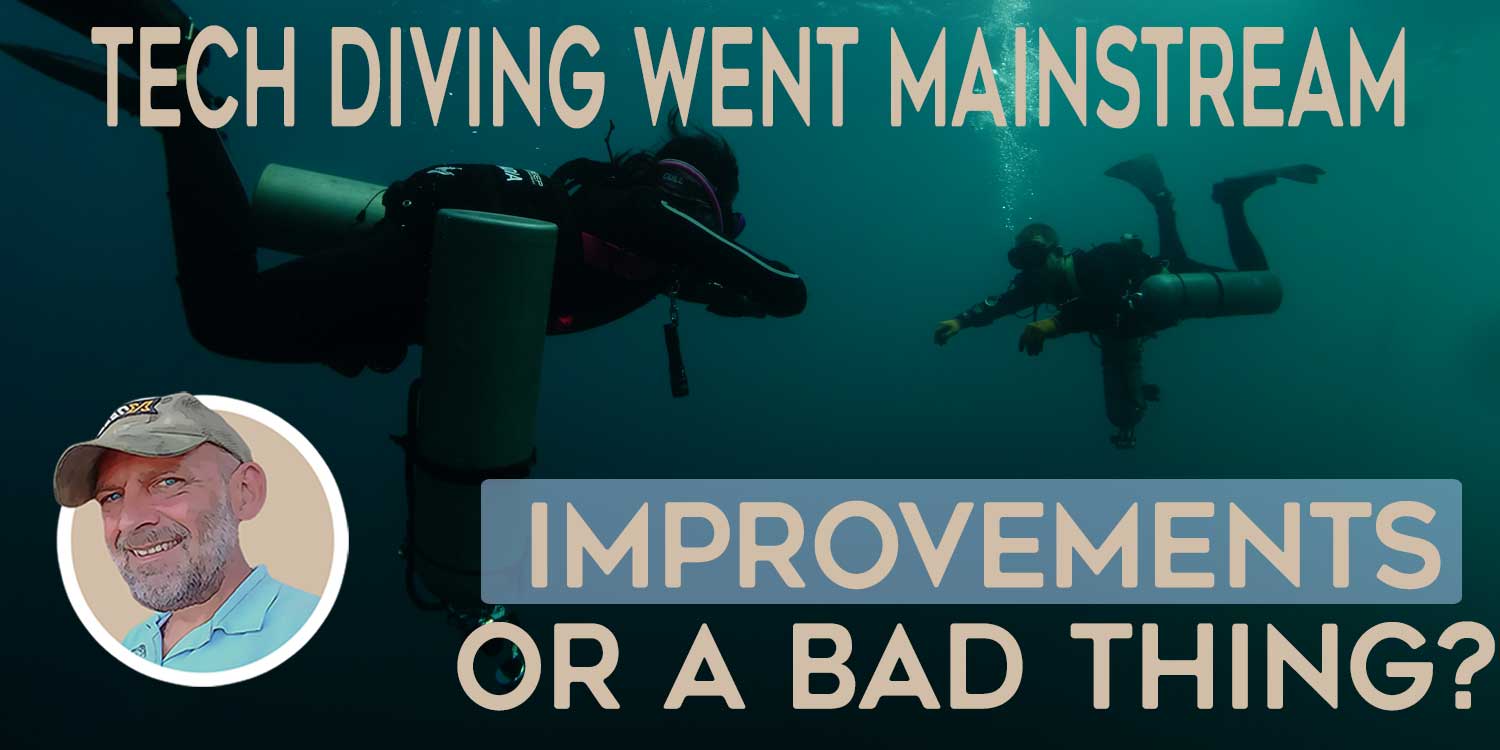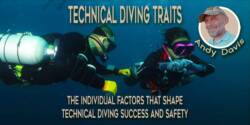Technical Diving Development: Goal-Setting For Success!
Don’t waste time and money when developing as a technical diver. Use this advice to create the best training plan to succeed in your tech diving ambitions
Technical diving is a serious endeavour, that requires a significant commitment in respect of money, time and effort. For that reason, it is wise to establish an individualized long-term plan for your technical diving developement.
Setting long-term goals for technical diving training and development obviously requires some prior research. As an aspiring technical diver, you need to be fully aware of the commitments necessary, especially in cost and time, to achieve the general goals you have in mind.
Three Steps To Setting Goals For Your Technical Diving Development
I consider there to be three major steps to setting development goals that ensure success as a technical diver:
- Decide your long-term goals; which enable you to ‘begin with the end in mind’.
- Divide that long-term goal into achievable and realistic stages/phases of development.
- Research the instructor/s that will best enable you to achieve those stages/phases.
Training and experience must develop in tandem – factor in significant periods of diving only, so as to fully ingrain new skills and procedures before progressing with further training. You can learn skills in a training course, but it takes considerably longer to ingrain them as autonomic and instinctive behaviors. Until skills are developed to an unconscious level, they are not truly reliable.
I’d suggest initially focusing on training/development rather than buying technical diving equipment. Mindset, skills and effective procedures are what make a competent technical diver, not the fancy diving kit they wear. Invest in superior training and the kit issues will resolve themselves thereafter.
Short-term goals, for instance; to improve X, Y or Z skills… or to gain experience in specific circumstances, can be set as you go along. These are based on instructor or team/peer feedback and honest self-appraisal of your strengths and weaknesses.
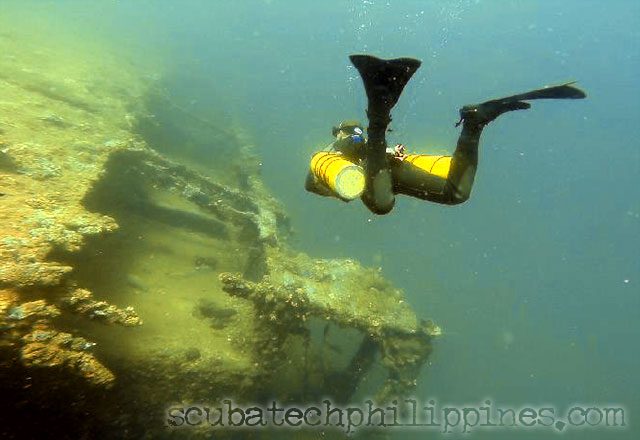
How To Define Long-Term Technical Diving Goals
Deciding on your long-term technical diving goals can be quite a challenge at the outset. The most important factor is that they should be realistically achievable. This means you must confidently predict enough opportunity to do that level of diving with sufficient frequency to ensure continued, if not improving, proficiency.
Becoming a ‘CCR trimix cave diver’, or whatever your goal may be, isn’t about getting a plastic card to put in your wallet. It’s about the reliable skills and experiences you maintain through repeated and continual diving at that level, in that environment, in that configuration of equipment.
It’s important to recognize the profound skill fade that occurs when you don’t dive at a given level for extended periods of time. There’s little point in gaining qualifications that you won’t be able to utilize frequently enough to maintain competency.
Think about your opportunity to retain, not just gain proficiencies.
Make Your Technical Diving Goals Realistic
Your long-term goals must reflect a sensible, common-sense, and humble acceptance of the investment you can realistically make to that order of diving. Investment in money, time, and hard work…. over a duration of years and decades. The more preparation for technical diving you can do in advance, the more efficient your progress will be later.
Consider Your Budget And Opportunity
This includes your foreseeable future budget, your location, other life commitments, and the frequency of access to appropriate dive locations. It must also reflect a realistic appraisal of your motivation to continually train, without cutting corners, and to build your physical, medical, and mental fitness.
Plan A Timescale
Setting a timescale for your development is a harder prospect. The speed of progression in technical diving is very individual and can be hard to predict in advance. If you select honest, ethical, and high-standard instructors, they will give you accurate advice on your strengths and weaknesses as you progress through varied stages of training.
Value constructive criticism
Respect and adhere to that feedback. Don’t stick to unrealistic timescales and push forwards with new training until you have eliminated your weaknesses and consolidated your new skills. Stay flexible and remain focused on your actual competencies, not your ambitions.
Needless to say, avoid like the plague those technical instructors who unrealistically encourage rapid progression and ‘sell’ continued education.
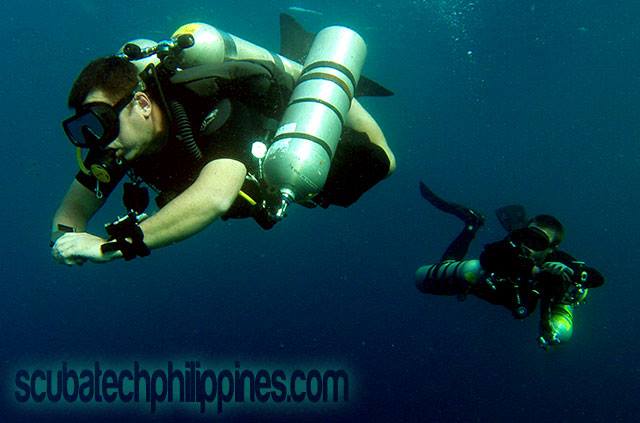
How To Decide Phases Of Technical Diving Training Development
One example of a possible strategy for development would be to separate the phases of fundamentals, basic decompression and then more advanced or specific technical diving training:
Fundamental Skills Development Phase:
Initial training for technical diving must stress the development of fundamental skills; buoyancy control, trim, situational awareness (gas, time, depth, location, team), precision planning, and ascent protocols must be developed to a high standard. That standard should not perish when subjected to new skills being added, or other task loading being presented.
Make your mistakes….and do your learning… in no-stop scenarios before you decrease the survive-ability of your dives by adding decompression. In short – you need to be a highly competent diver before you can become a technical diver.
Basic Technical Diving Development Phase:
Subsequent training in basic decompression procedures builds on those fundamentals. This is basically carrying extra deco cylinders, gas switches, ascent/stop discipline, and comprehensive risk awareness/mitigation strategies.
It sounds simple, but gaining real competency in decompression diving takes hard training. Again, this must go beyond simply ‘learning skills; those skills must be fully ingrained so that they become an autonomous and instinctive function; something that occurs reliably and consistently regardless of other stressors and distractions.
Make your mistakes….and do your learning… in basic decompression scenarios before you decrease the survivability of your dives by adding overhead environment hazards. In short – you need to be a highly competent technical diver before you become an overhead environment technical diver.
Advanced Technical Diving Development Phase:
Finally, you can add goal-specific training at more advanced and challenging levels; building on your fundamentals and decompression training to conduct dives with additional hazards/demands and the skills necessary to mitigate those.
These could include overhead environment (cave or wreck) penetration courses or hypoxic trimix qualifications. By this time your fundamental dive skills should be flawless, unconscious, and reliable; your ability to plan and conduct decompression should be second-nature. Everything you now learn at a higher level builds upon ingrained prerequisite competencies.
Deciding Between Open Circuit and Closed Circuit Rebreather Equipment
One important decision is whether you should start your technical diving development using an open circuit or closed-circuit rebreather (CCR). Whichever option is chosen, you need to establish effective equipment competency as the initial stage, then build your fundamentals in that configuration, then add decompression training, and finally develop that in more advanced and specialist activities.
The benefits of open circuit technical diving equipment
Open circuit equipment is obviously what you’re most competent with initially as a recreational diver. That is especially true for sidemount divers. This gives the most direct route to gaining fundamental, decompression and overhead environment progression. You might choose to do your training in open circuit for that reason alone… a faster initial development. Whilst a full open circuit technical diving equipment setup isn’t cheap, it costs a lot less than CCR.
You could start out with open circuit technical diving equipment and then switch to CCR at a later stage. There may come a point when you start needing the capabilities offered by CCR for an extended duration and/or very deep technical dives. ‘
However, a delayed cross-over to CCR necessitates a significant step-back in diving; you’ll be going ‘back to the start’ and building progression at each stage all over again. This requires significant patience and discipline. That said, so does all effective technical diving development.
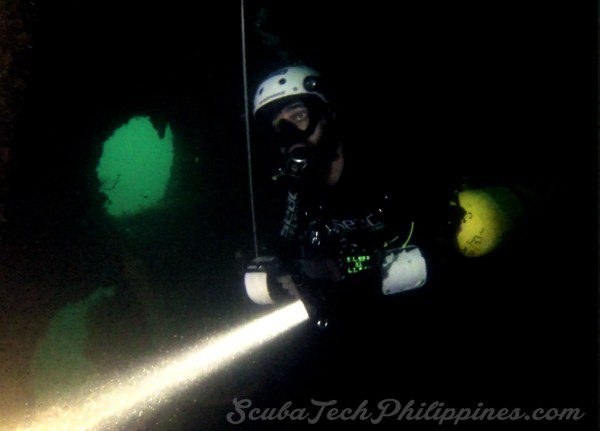
Parallel versus linear development paths in open-circuit and CCR
Instead of a single path of linear development in just one technical diving equipment configuration, you could attempt to gain competency in both options simultaneously.
If you had ready access to dual environments (Open Water and Overhead Environment) you could progress simultaneously on two tracks; diving open water to develop decompression skills whilst also developing cave skills without decompression.
Eventually, when both were profoundly competent, you could merge those development paths and incorporate decompression with your cave dives. The challenge with dual-path development is that individuals must exert responsibility to balance their progress in each aspect and allow no ‘chinks in their armor’ to exist.
The same is true if considering a dual, or triple, path of development with OC decompression, OC overhead environment, and CCR training. You could do all three simultaneously and then merge them together at a suitable time. The important thing, of course, is that each aspect remains equally strong and develops at an equal pace.
Diluting your technical diving equipment operation familiarity
Attempting dual, or triple, development paths isn’t necessarily a quicker route to technical diving competency. This is because you are diluting your experience in each aspect. If your opportunities for diving are limited, then you are dividing your potential in-water development across those different paths of development.
For example, if you had the opportunity to conduct 100 dives per year, you’d develop functional capability quicker if all of those 100 dives were on open-circuit equipment. You’d develop slower if 50 of the dives were open-circuit and 50 of the dives were on CCR. Your sum experience in either configuration would be only 50 dives.
Of course, there are transferable skills; but the differences would outweigh those, and developing an unconscious level of equipment operation familiarity is a vitally important prerequisite for progression to higher levels of diving.
Realistically, very few divers have unlimited opportunities to develop their skills. Even full-time technical diving professionals are limited in time opportunities to push their own comfort zones, extend skill boundaries, conduct deliberate practice for their own needs, and embark on technical dives which challenge their personal experience.
Skill fade and counter-developmental equipment conflicts
Too much time between dives of a specific configuration will lead to skill fade. Likewise, the skill demands of different configurations; for instance, buoyancy control in open versus CCR, may be counter-intuitive. This can dramatically slow capability progression in both configurations. Diluting your training by attempting too many simultaneous strands of progression can lead to very slow or ineffective technical diving ability development.
The big investment needed for CCR equipment
CCR is a big investment. Not only in money but also in time and effort. I’d suggest that you would need a high degree of certainty that you can commit to CCR in all facets of your diving if you’ll choose that option for your technical diving equipment configuration. You’d need to first become a very good CCR diver before attempting to become a CCR technical diver or CCR overhead environment diver.
Diving CCR tends to involve a much higher initial financial expenditure. However, there can be a big return on that investment if you will dive your unit with enough frequency and if you reach a level where the gas efficiency of closed-circuit diving significantly reduces expensive helium bills.
CCR equipment also demands significantly more financial outlay in terms of maintenance and servicing; even if it is not being used. If you are adept at dealing with electronics and equipment servicing, it will save you some money. CCR equipment may be a bad choice for technical divers who loathe dealing with equipment functionality issues and don’t find enjoyment in fiddling and tinkering with complex dive gear.
However, CCR equipment can easily become a ‘money pit’ if it spends a lot of time sitting in a crate unused. You need to be sure that you will be able to conduct most, if not all, of your future diving on your rebreather to make the initial outlay and ongoing maintenance costs worthwhile.
The question to ask yourself is whether you have the patience and engineering interest to be a CCR equipment owner.
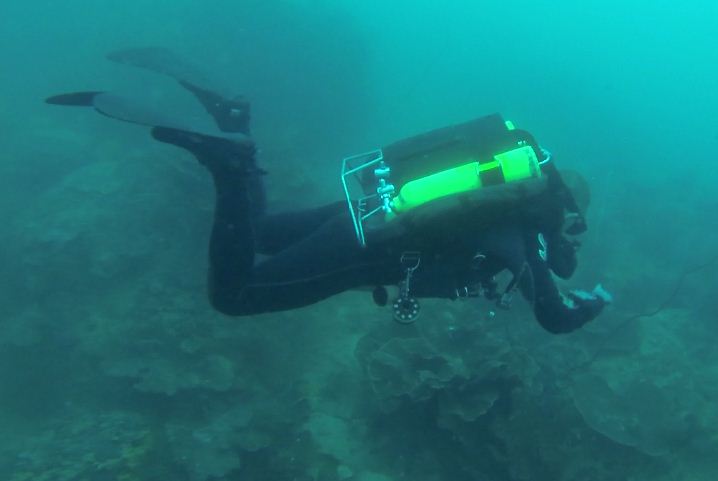
How To Decide On A Technical Diving Instructor
A large part of the investment in technical diving is in training courses. Be honest about your budget and dedication to training. You should aim to get the best training that you can afford, and this includes traveling to gain access to true expertise. Be aware that the technical diving training market is increasingly saturated by ‘less than expert’ instructors.
The instructor’s training agency should be considered, as understanding the differences between technical diving agencies can help answer some questions that you may have.
One technical diving instructor, or learn from a variety?
One of your first decisions is whether you will seek single, or multiple instructors along the stages of your technical diving development. There are pros and cons to either strategy.
Training with a single technical diving instructor
Having a single instructor allows a higher degree of mentor relationship; giving the benefit of more fluid and progressive development across multiple courses. A mentoring type of program allows a better student-instructor interface and promotes a singular philosophical approach to technical diving. Because training is an ongoing relationship, there will be more consistency in the approach to your training. They will be familiar with your strengths and weaknesses, and training can be better adapted to take advantage of that familiarity.
The drawback is that few instructors possess exceptional expertise across multiple aspects of technical, CCR, and overhead environment diving.
Generalists are good at everything. Specialists are exceptional in their selected form of diving.
Training with multiple technical diving instructors
Choosing to train with multiple instructors allows you to pick true specialists in varied aspects of diving. These are the true ‘masters’ of specific disciplines and will offer a higher level of expertise within their specialism.
The advantages of training with a world-class specialist are obvious. The drawbacks are that you’ll often have to travel to them and your student-instructor time will consequently be limited. Also, depending on your psychology, it can be either a pro or a con to have exposure to multiple…. and sometimes contradictory…. philosophical approaches to technical diving. Some divers benefit from consistency, while others prefer to be subjected to different views and then decide on their own philosophy.
In short, do you want a local Mr. Miyagi-type mentor….. or do you wish to be a pilgrim to the masters?
About The Author

Andy Davis is a RAID, PADI TecRec, ANDI, BSAC, and SSI-qualified independent technical diving instructor who specializes in teaching sidemount, trimix, and advanced wreck diving courses.
Currently residing in Subic Bay, Philippines; he has amassed more than 10,000 open-circuit and CCR dives over three decades of challenging diving across the globe.
Andy has published numerous diving magazine articles and designed advanced certification courses for several dive training agencies, He regularly tests and reviews new dive gear for scuba equipment manufacturers. Andy is currently writing a series of advanced diving books and creating a range of tech diving clothing and accessories.
Prior to becoming a professional technical diving educator in 2006, Andy was a commissioned officer in the Royal Air Force and has served in Iraq, Afghanistan, Belize, and Cyprus.
In 2023, Andy was named in the “Who’s Who of Sidemount” list by GUE InDepth Magazine.
Purchase my exclusive diving ebooks!
Originally posted 2018-11-05 06:10:16.








